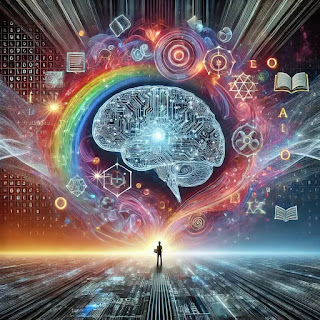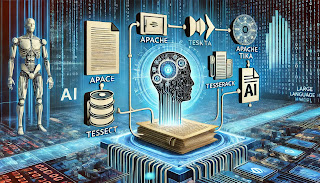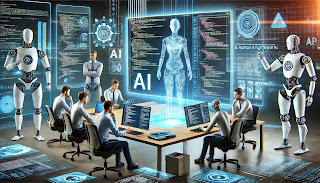Language is the foundation of human civilization, serving as the medium through which we express thoughts, convey emotions, and connect across cultures. In recent years, the advent of generative artificial intelligence (AI) and large language models (LLMs), such as OpenAI’s GPT and others, has introduced a significant shift in how language is used, created, and understood. These advancements are not only expanding our vocabulary but also influencing how we communicate, raising concerns about our relationship with language itself.
This article explores how generative AI and LLMs are reshaping vocabulary and the broader linguistic landscape while pondering whether these technologies might inadvertently weaken our grasp on human languages.
The Rise of Generative AI and LLMs
Generative AI refers to systems capable of producing new content, from text and images to music and code, based on learned patterns from vast datasets. Large language models (LLMs) are a subset of generative AI designed to process and generate human-like text by predicting the next word or sequence of words in a sentence. Examples include GPT-4, ChatGPT, and other advanced AI tools that interact seamlessly with human users.
These models are trained on massive amounts of text data sourced from books, websites, and social media, enabling them to generate coherent, contextually relevant, and often creative outputs. Their ability to adapt and mimic human language has made them invaluable for applications like customer service, content creation, and even education.
However, the very power of these technologies lies in their potential to redefine how we use language, introducing both opportunities and challenges.
How Generative AI Expands Our Vocabulary
1. Creation of New Words and Phrases
Generative AI models often combine linguistic elements in novel ways, giving rise to new words or phrases that previously didn’t exist. For instance:
AI-generated slang: Phrases like "prompt engineering" or "token economy" have emerged from interactions with AI technologies.
Technical jargon: As AI technologies evolve, so do the terms associated with them, such as "fine-tuning," "hallucination," and "latent space."
2. Accelerating Neologisms
The pace at which new words enter the lexicon has significantly increased with AI-generated content. Social media, blogs, and forums fueled by AI-driven automation contribute to the rapid adoption of neologisms, some of which gain widespread use within months.
3. Democratisation of Language Creation
AI-powered tools enable non-native speakers or those with limited linguistic creativity to experiment with language. This democratization broadens the scope for cultural influences, dialects, and individual creativity to influence mainstream vocabulary.
Changing Communication Styles
1. Simplification and Automation
Generative AI often prioritizes clarity and brevity, sometimes simplifying complex ideas to fit structured formats. While this makes communication more efficient, it risks reducing the richness and nuance of language.
2. Shift Toward AI-Friendly Language
As more people interact with AI systems, their communication patterns may shift to accommodate the AI's limitations. Users often adapt their phrasing and syntax to make queries more understandable, potentially reinforcing simplified and repetitive patterns.
3. Homogenization of Language
Generative AI models are designed to reflect the majority patterns in their training data. This can lead to homogenization, where regional dialects, unique idiomatic expressions, and minority languages are overshadowed by more dominant linguistic trends.
Potential Loss of Human Connection to Language
1. Overreliance on AI for Communication
The ease and accessibility of AI-driven tools have led to increased reliance on these systems for tasks like writing emails, crafting essays, and even composing poetry. While convenient, this overreliance risks diminishing individuals' ability to express themselves independently, potentially eroding their creative and linguistic skills.
2. Decline in Critical Thinking
Language is intricately tied to thought. When AI handles the task of generating ideas or structuring arguments, users may engage less in critical thinking processes. This detachment from active language use could result in a shallower understanding of complex concepts.
3. Decreased Memory for Vocabulary
With AI readily available to suggest synonyms, definitions, and sentence structures, there may be less incentive for people to expand and retain their vocabularies. Over time, this could lead to a narrowing of individual linguistic repertoires.
The Risk of Losing Linguistic Diversity
1. Marginalization of Minority Languages
AI models are predominantly trained on widely available data, often in dominant languages such as English, Mandarin, or Spanish. As a result, minority languages and dialects may receive less representation, risking their further marginalization.
2. Uniformity in Creative Expression
Generative AI tends to generate content based on prevalent patterns, potentially stifling unconventional or avant-garde forms of expression. This could lead to a cultural loss where linguistic diversity and experimentation are overshadowed by formulaic outputs.
3. Cultural Disconnect
Language is deeply tied to culture, history, and identity. If AI-generated language becomes the default, there is a risk of disconnecting from the cultural and historical contexts that give human languages their depth and significance.
Addressing the Challenges
While the influence of generative AI and LLMs on language is undeniable, proactive measures can help mitigate potential downsides:
1. Encouraging Linguistic Education
Promoting language learning and critical thinking skills in education can counterbalance the overreliance on AI tools. Teaching individuals to use AI as a supplement rather than a replacement ensures they remain active participants in language use.
2. Preserving Linguistic Diversity
Developing AI models that prioritize inclusivity by incorporating diverse languages and dialects is essential. Collaborative efforts with linguists and cultural experts can help preserve and celebrate minority languages.
3. Emphasizing Ethical AI Development
AI developers must prioritize ethical considerations, ensuring that models are designed to complement human creativity rather than replace it. Transparency in how AI systems process and generate language can foster greater trust and accountability.
4. Balancing AI Integration
Users and organizations must find a balance between leveraging AI's efficiency and maintaining the human touch in communication. Encouraging a hybrid approach—where humans and AI collaborate—can preserve the integrity of language while reaping the benefits of technological advancements.
The Future of Language in an AI-Driven World
Generative AI and LLMs are undoubtedly reshaping the linguistic landscape, introducing exciting possibilities while posing significant challenges. They expand vocabulary, democratize language creation, and streamline communication, yet they also risk homogenizing language, marginalizing minority voices, and weakening our connection to linguistic traditions.
To navigate this transformative era, it is essential to embrace the innovations brought by AI while remaining vigilant about their potential drawbacks. By fostering a deeper understanding of the interplay between AI and language, we can ensure that these technologies enhance, rather than diminish, our linguistic and cultural heritage.
The key lies in striking a balance—leveraging AI to amplify human creativity and diversity without losing sight of the intricate beauty and complexity that define human language.





.jpeg)